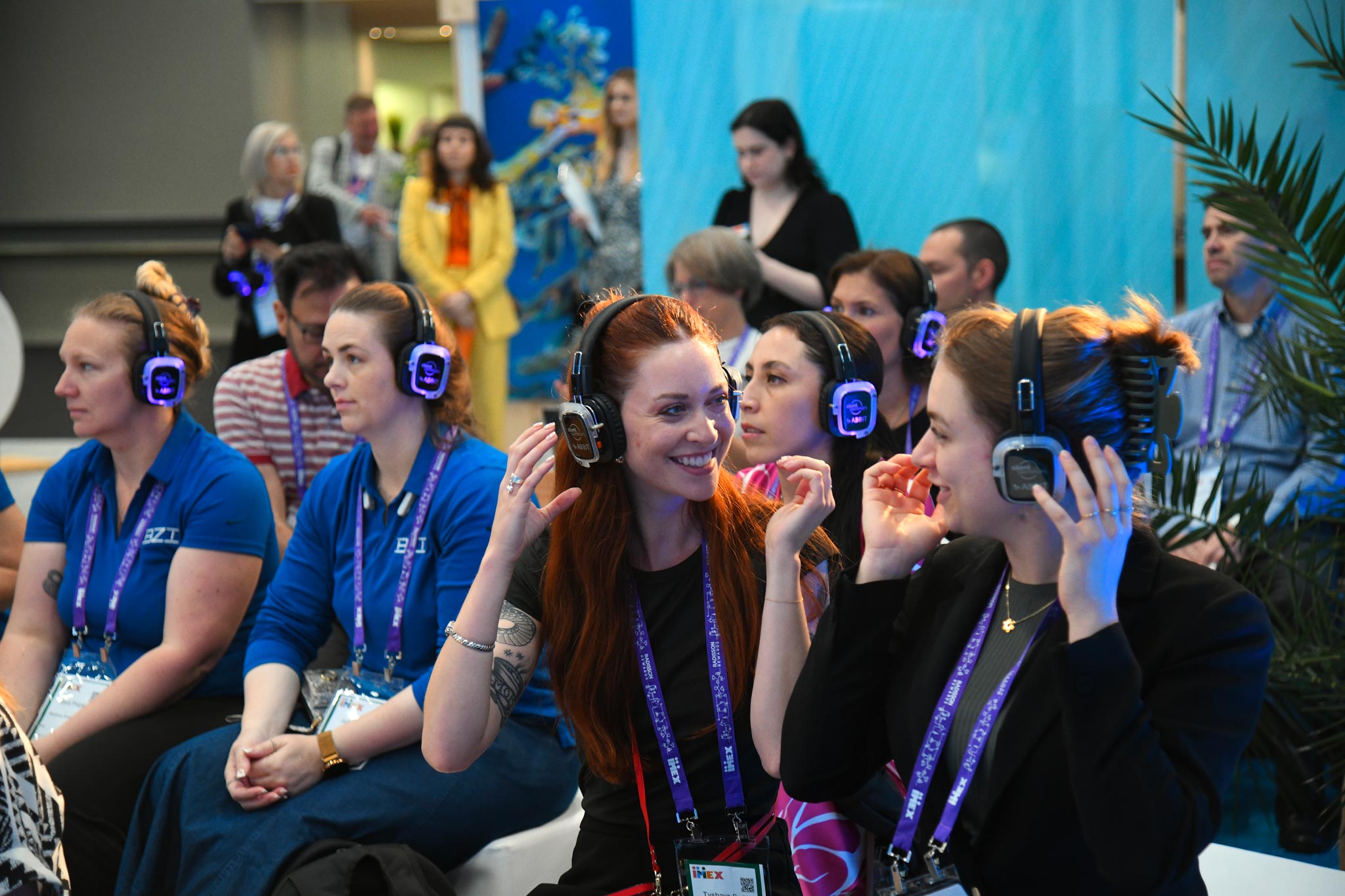Great design gets under your skin. It’s this feeling that whatever this is, it was meant to be, it was crafted for me (or collectively for us), does what it’s for, and serves its purpose. We can spot shoddily designed clothing at a hundred paces, a poorly designed online user experience gives us visceral shudders and a functionally inept building swiftly becomes a laughing stock or source of communal shame.
Great design elicits an ancient feeling going back to the first time our ancestors grasped a perfectly knapped flint tool when our forebears gazed in awe at the dawn-lit symmetry of Stonehenge or participated in ritual song and dance at prehistoric springtime ceremonies. We instinctively recognise great design when we see, touch, and experience it: we’re genetically hard-wired and culturally reinforced design nerds, individually and collectively.
You know when you’ve attended a great meeting: an event designed to solve significant problems, where you and your fellow delegates feel involved and important: that creates a positive environment and makes it easy to interact with strangers, where you feel stimulated with fresh insights and where your perceptions are challenged; from which you return knowing what to do next to advance your career, your business, your research projects, or a societal mission, where you leave feeling simultaneously energised and exhausted.
But the default is that most meetings we attend are not particularly well-designed. We have all suffered in identikit hotel ballrooms through hours of predictable PowerPoint presentations or hypermotivational keynotes from which we remember almost nothing of value.
We spend most of our time with the people we already know; we listen passively as corporate change management initiatives are rolled out repetitively by the same old faces.
There’s generally a decent party somewhere in the mix (but the music is usually too loud to talk), and when it’s over, the best we can say is that the buffet lunches were better than the previous year and that the meeting was “OK.”
Why is this so? In part, it’s because of the default ways our education and business models were organised over the second half of the 20th century. Today’s meeting decision-makers grew up with these models and too often think of them as universal or “natural”: theatre style and classroom style room set-ups and lecture and workshop formals that stem from top-down pedagogy and command-and-control corporate norms. Authority figures, experts and motivators, rule the roost, and delegates are there to absorb information and follow the centralised workflow. Standardisation is the norm.
“The biggest work mega-trend has to be remote working”
It’s also because of the roles that meetings suppliers have cast for themselves. Venues offer standard room layouts for standard price packages. Many city marketing organisations still think about aggregated bed nights, not impact and out-comes.
Technical suppliers rigorously follow technical specifications; social programme designers follow narrowly defined RFPs. Few suppliers have questions such as “What are your delegates’ objectives for attending?” or “What feelings are you trying to elicit during this part of the programme?”
There is a reluctance amongst suppliers to initiate or engage in conversations about design concepts, event psychology, experimentation or desired outcomes, even though they are often in the best position to offer novel solutions and valuable outsider perspectives.
Perhaps even more crucially, we have not seen an uprising among delegates. No one would accept a mobile phone today with 30 minutes battery life that has to be carried slung over the shoulder; we would reject out of hand any child car seat that hasn’t been crash-tested to destruction, and even icons like the Boeing 747 are now abandoned forever in the Mojave Desert, for design-knowledge, design-thinking and design solutions have moved on.
You would expect delegates to revolt at meetings that display a profound lack of imagination, with programmes that offer little help in delivering useful results.
Instead, they all too often attempt to make the best of a poor job, to find personalised solutions in the liminal spaces hidden away in the shadows of the official event proceedings.
And of course, now and then, often surprisingly, we are exposed to a brilliantly designed conference, which gives us the energy boost sufficient to bear the burden of the next half-dozen mediocre meeting experience.
If this sounds depressing and pessimistic, I should clarify that I am an eternal optimist by nature, especially regarding the future of meetings.
This optimism is fed by the knowledge that profound changes are emerging today in the worlds of work and education, and these will inevitably powerfully influence how meeting design evolves.
Societal priorities are being reordered, values are being upended, and everywhere we look, the concept of ‘purpose’ is taking centre stage, whether in the motivation of young workers, the mission of corporations, or the relationships between citizens and their policymakers.
These mega-trends cannot help but shape how we design and experience our meetings; they will be all the better.
“Life–work balance is becoming the top employee demand”
The biggest work mega-trend has to be remote working. Tools to support remote teams and asynchronous work are increasing, and the measured output is replacing excellent at office politics as the prime determinant of success. Life–work balance is becoming the top employee demand.
Corporate culture and relationships are the last being recognised as critical components of long-term success and organisational differentiation. When teams or entire workforces get together physically, a huge amount of intellectual effort is expended to make that time as valuable as possible.
Design thinking and psychological awareness are shaping the emerging models, and meetings are becoming more integral to the overall organisational vision, not treated as a stand-alone activity.
More and more of the smartest, most progressive companies are embracing community-led models involving the management of the complex. Nonhierarchical networks of in-house and external teams, suppliers, partners, clients and customers across dozens of countries. Delegates at an ever-increasing proportion of corporate events won’t be ordered to attend, they will need to be enticed, and if that company’s meeting design doesn’t deliver what delegates need, they will simply vote with feet.
In education, collaboration and creative problem-solving and (at last) winning the struggle against rote learning and memory-testing. The champions of pedagogical models that prepared workers for the age of mass production are fighting a losing battle, and countries that are giving their young people the intellectual tools to be successful in the digital age, from Estonia to Singapore, are being emulated by their competitors.
With talent now being so mobile, not shifting to this new educational mindset for countries, meeting -owners, and individuals is a recipe for competitive obsolescence. This is the source of a new generation of delegates who refuse to accept -old-fashioned ways of sharing, critically evaluating and creating knowledge.
We live through a golden age of association creation, accelerated mightily by the 2020 Covid-19 pandemic lockdowns. Individuals who care passionately about a shared interest or challenge, whether that be scientific, business-related, or societal, have found each other online or started to build long-term communities, not least because, for the first time ever, there are scalable problem-solving and engagement tools, from Mural to Zoom.
But they wouldn’t think of describing themselves as “associations” and won’t be interested in the traditions and rituals of association general assemblies. Many are already moving from online to face-to-face meetings. In doing so, they will bring their tools and culture and community engagement models with them, which will help to revolutionise the association meetings sector.
Convention bureaux and city development agencies are increasingly talking about citizen-centred marketing and economic development strategies, intending that the meetings they attract should be aligned with the goals expressed by their citizens:
“There is a reluctance amongst suppliers to initiate or engage in conversations about design concepts, event psychology, experimentation or desired outcomes”
- More circular economic flows.
- Better solutions for societal and environmental challenges.
- Bringing in more investment for local institutions.
- Transferring valuable know-how and expertise where it’s needed on the ground.
If meetings cannot be designed to unlock these benefits, many destinations will not want to support attracting and hosting them. But this trend also creates a growing reservoir of strategic destination partners for those who do design impactful and purpose-driven events.
We have a choice. We can wait for these mega-trends to reshape the landscape of event experience gradually, or we can take action by adopting the concepts, practices and overall philosophy found throughout the book Meetings, by Default or by Design written by Mike van der Vijver and Eric de Groot.
Where to start? Ask these simple ten questions that go to the heart of how we design and evaluate our meetings.
Is this a good meeting?Does it deliver the company’s or associations’ objectives and those of the attending delegates?Is this a good meeting?Does it pay vastly more attention to what’s going on inside delegates’ brains than what they put in their mouths at lunchtime?Is this a good meeting?Do the positive outcomes dramatically outweigh the environmental impact of holding it?Is this a good meeting?Does it resonate with and influence audiences beyond its duration and physical location?Is this a good meeting?Does it facilitate understanding and respect between those from different cultures or holding different viewpoints?Is this a good meeting?Does it add to the sum of new knowledge and wisdom in the world?Is this a good meeting?Does it help to reduce the sum of superstition, prejudice, ignorance, and pseudoscientific nonsense in the world?Is this a good meeting?Does it generate creative solutions for society’s most challenging problems?Is this a good meeting?Was it fun or intellectually stimulating to attend?Is this a good meeting?If not, why on earth did you decide to organise it, host it, or attend?
Designing a “good meeting” isn’t rocket science. Still, it does require a comprehensive toolkit of proven techniques and new ways of thinking about purpose and outcomes, context and environment, behaviour and beliefs.
Put simply; it requires the insight and innovations found throughout the book Meetings, by Default or by Design.



